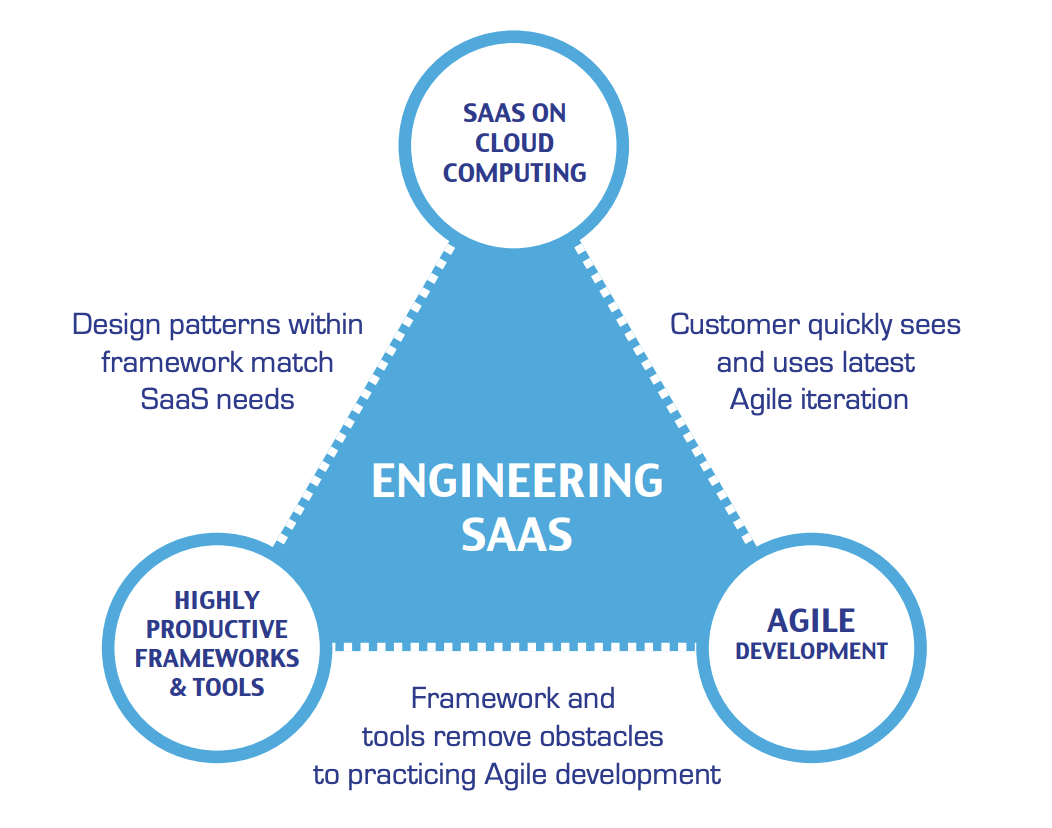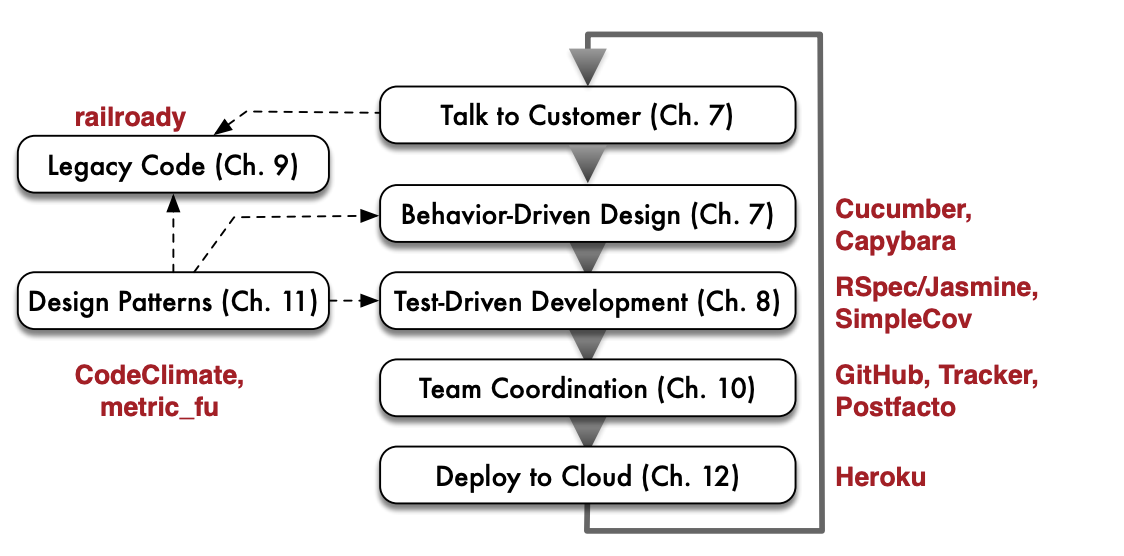
13.1. Looking Backwards¶
Figure 13.1, first seen in Chapter 1, shows the three “crown jewels” on which the material in this book is based. Each pair of “jewels” forms synergistic bonds that support each other, as Figure 13.1 shows. In particular, the tools and related services of Rails makes it much easier to follow the Agile lifecycle. Figure 13.2 shows our oft-repeated Agile iteration, but this time it is decorated with the tools and services that we use in this book. These 14 tools and services support both following the Agile lifecycle and developing SaaS apps. Similarly, Figure 13.3 summarizes the relationship between phases of Plan-and-Document lifecycles and their Agile equivalents, showing how the techniques described in detail in this book play similar roles to those in earlier software process models.
Rails is very powerful but has evolved tremendously since version 1.0, which was originally extracted from a specific application. Indeed, the Web itself evolved from specific details to more general architectural patterns:
From static documents in 1990 to dynamic content by 1995;
From opaque URIs in the early 1990s to REST by the early 2000s;
From session “hacks” (fat URIs, hidden fields, and so on) in the early 1990s to cookies and real sessions by the mid 1990s; and
From setting up and administering your own ad-hoc servers in 1990 to deployment on “curated” cloud platforms in the 2000s.


The programming languages Java and Ruby offer another demonstration that good incremental ideas can be embraced quickly but great radical ideas take time before they are accepted. Java and Ruby are the same age, both appearing in 1995. Within a few years Java became one of the most popular programming languages, while Ruby remained primarily of interest to the programming languages literati. Ruby’s popularity came a decade later with the release of Rails. Ruby and Rails demonstrate that big ideas in programming languages really can deliver productivity through extensive software reuse. Comparing Java and its frameworks to Ruby and Rails, (Stella et al. 2008) and (Ji and Sedano 2011) found factors of 3 to 5 reductions in number of lines of code, which is one indication of productivity.